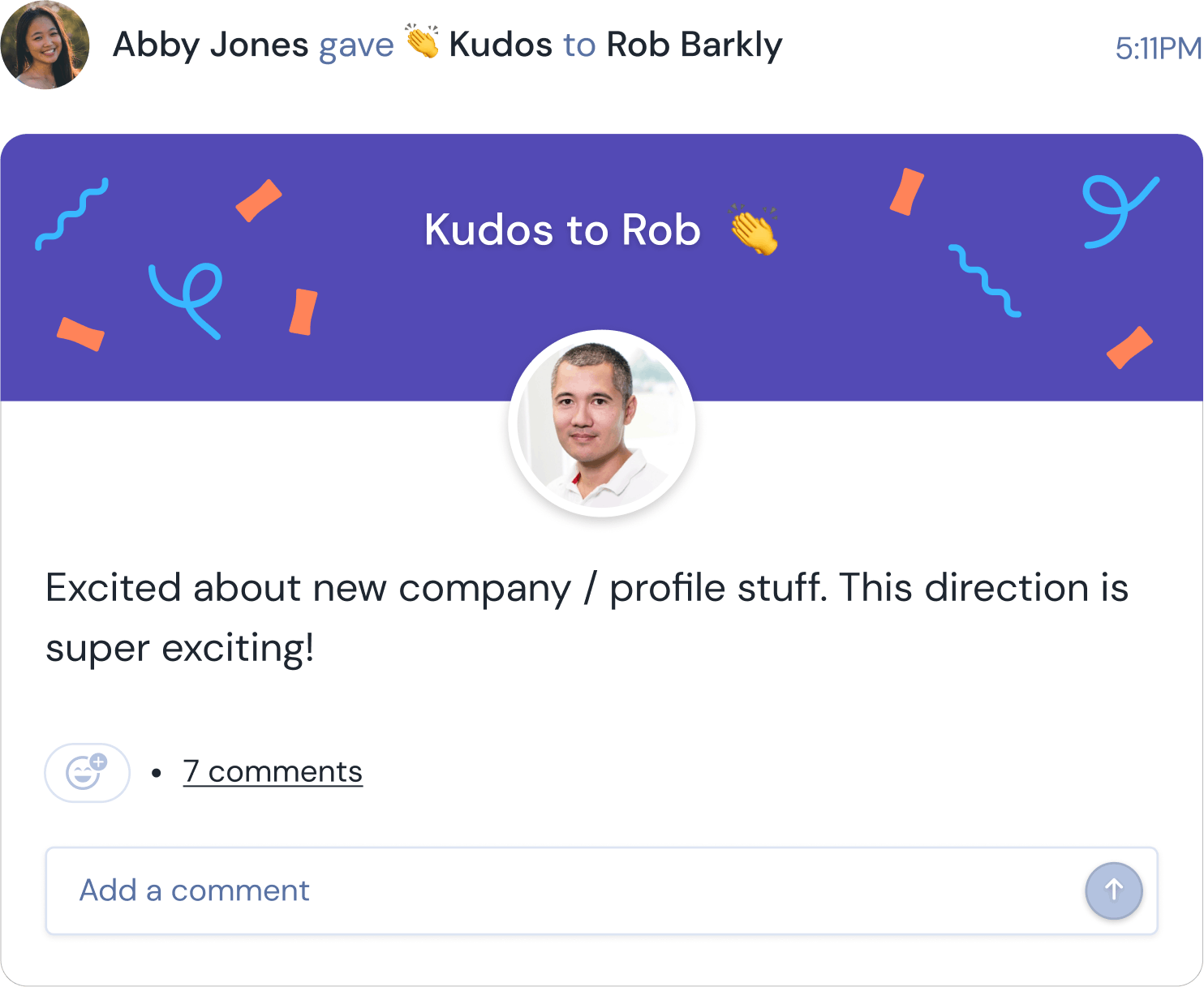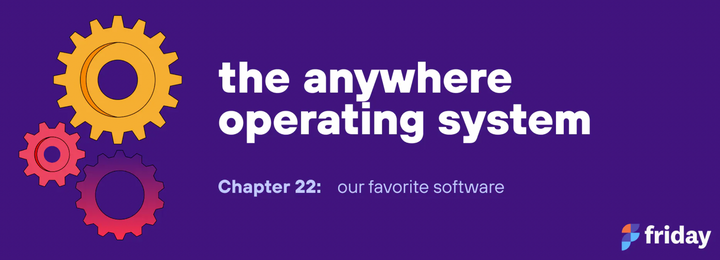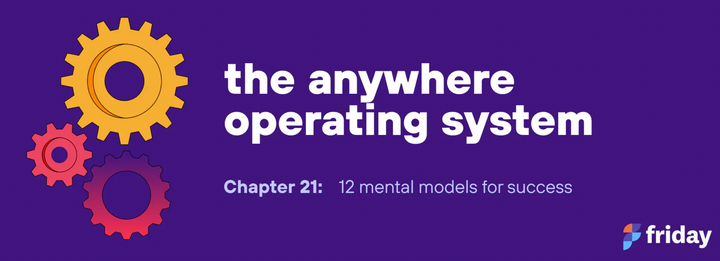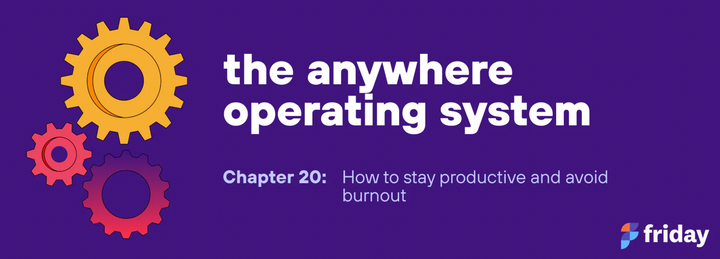Chapter 11: How to feel connected to your team

Another issue you will need to confront is feeling disconnected from your team. Before, you could walk into the office and feel the energy as you walked around. Now, you may try to engage the team through Zoom and it feels different. Sometimes you may try to be engaging on a Zoom call, but you get blank stares and silence from the group. Does anyone even care?
I get it. The fact that everyone isn’t together in one room makes running a business feel a lot more abstract. I can’t “influence” and energize my team like I might be able to in person. Is the energetic feeling a nice-to-have or a must-have though? I understand if you want to create an engaging place to work. I do, too. I have worked for companies where the office felt like a party atmosphere and while it was fun at times, we also had high turnover and the company ended up failing. The positive vibes didn't matter in the end.
In this chapter, we’re going to teach you some tactics to feel more connected to your team. The goal is to make sure that your coworkers feel more like people and less like words on a screen.
Asynchronous
The tips in this section help you learn more about your coworkers, without requiring a meeting. If creating a feeling of connection can only be accomplished with another meeting, you are creating a potential bottleneck.
Create people profiles
You should start by having every employee create a people profile. Think of this profile as a mashup of your LinkedIn and Facebook profile. The goal is to create context about who you are and how you like to work, which is especially important when you onboard new hires. These profiles build a bedrock of empathy and remind you that your coworkers are real people, not emotionless robots.

I’d strongly recommend the following sections in your profile:
1. Personal user manual
Personal user manuals have become a bit of a fad over the past couple of years, but the basic idea is that you can proactively answer questions to help coworkers understand your quirks, how you work, and what makes you unique. It’s like a user manual for how to work with you.
For example, you might answer questions like:
- What gives you energy at work?
- What drains you at work?
- How do you like to receive feedback?
- How can someone earn a gold star with you?
- What might someone misunderstand about you?
While these user manuals can become too prescriptive when left unchecked, they can also dramatically accelerate relationship-building for the group.
2. Personality
Whether you love personality tests or think they are hocus pocus, I’d recommend taking one. The purpose of a personality test is NOT to be prescriptive. They exist to provide a mental framework for understanding that people are different and that differences are a healthy thing. This exercise leads to deep, engaging conversations that help you get to know your team.
Additionally, when you combine a personality test with a user manual, you get a nice mixture of open-ended responses from the manual, while the personality test provides more structure. These two frameworks complement each other.
There are a variety of personality frameworks you could try, like:
I recommend DISC. The Enneagram is a useful conversation starter and goes deeper than DISC, but it’s a bit more unfiltered, which may not be ideal for work. I recommend using Crystal to generate personality results, generate group reports, and more.
Share Icebreakers
Another way to feel connected is by sprinkling icebreakers into existing rituals. At Friday, we use our software to periodically answer icebreakers after completing a daily standup or weekly update. This provides a steady stream of useful tidbits about your coworkers. It’s like a digital version of having an interesting discussion at the water-cooler in the office.

Say thanks on a regular basis
Everyone knows that they should say thanks a bit more often, but it’s easy to forget this simple, yet important activity. Is it possible to turn this into a habit?
Yup.
If you use Friday to share daily standups or a weekly update, you will get a prompt at the end, encouraging you to send kudos. This dramatically improves the likelihood that you will send recognition as it’s baked into an existing habit.

People love it when coworkers make an intentional effort to thank them. I’m sure you will find the same with your team.
Synchronous
Next, we have ways to feel connected that revolve around meetings. These events should be intentional and well-planned. If you schedule a team-building event at 10 p.m. for a coworker, they probably won’t enjoy it.
Flip some of your meetings upside down
Typically, meetings at work start with a few minutes of small talk, followed by discussion of work. I’d encourage you to create a few meetings where the format is the exact opposite.
Instead of small talk at the beginning, you could start with work and then spend the rest of the time doing team building. Instead of spending 5% of meeting time hanging out, you should hang out 95% of the time instead.
To illustrate how this format works, we hold a one-hour meeting every two weeks that we call, “coffee shop co-working.” The basic idea is that we try to create a time to hang out like we might if we were all huddled around a table at a coffee shop.
The purpose of this meeting is to hang out, play games, and talk about work a little bit. While there is no replacement for hanging out in person, I really enjoy this time and it’s an awesome way to learn more about my coworkers.
The format of this hangout varies, but it resembles something like this:
- 10-15 minutes — show and tell. You can share something cool you are working on for the benefit of the broader group
- 10-15 minutes — brainstorming around a particular problem or area of opportunity that is relevant to the entire group
- 30 minutes — play games
I always end these meetings feeling like I could go another hour. They are a ton of fun.
Play games
Playing games may sound cheesy, but it’s much better than awkward team building sessions where you go around in a circle and answer lame questions about yourself in front of everyone else. You need to create an environment where people can let their guard down and have a bit of fun. Games is how you make this happen.
I recommend the following options:
1. Skribbl
Skribbl is online Pictionary. One person draws a picture and everyone needs to guess the correct word within a limited amount of time. While this sounds cheesy at first blush, it’s a lot of fun.
2. Gartic Phone
Gartic Phone is like the telephone game meets Pictionary. Someone on your team writes a statement, and someone else needs to draw it. This process repeats itself and involves a lot of laughs. Without a doubt, this is the funniest game I've ever played with the Friday team. The makers (Onrizon social games) have other fun games worth trying, so make sure to check those out too.
3. Quiplash
Next up, we have Quiplash. Quiplash allows two or more people to answer prompts and the audience picks a winner. You can discover who is sarcastic, witty, and more.
4. Airbnb Online Experiences
Another option is an Airbnb online experience. Basically, it’s a group Zoom call where you can learn about something interesting, like how to make an epic cup of coffee, what it’s like to live in New Zealand on a goat farm, and more.
5. Cribs: work-from-home edition
Finally, you might consider having teammates share house or home office tours, like you are the host of MTV Cribs.
The point of these team-building events is to kickstart conversation and make it easy to get to know your team. If this feels forced, continue to iterate until you find something the team enjoys.
6. Friday afternoon happy hour
Another option is to hold a happy hour on a Friday afternoon. I’ve heard of some companies playing video games during this time. Several of our customers do this and seem to enjoy it. Once again, make sure you are being thoughtful about when these events occur, especially if your team is scattered across several time zones.
Aisha’s perspective
“Along with reading my coworkers’ icebreaker answers every morning, one thing I really appreciate about Friday are the co-working coffee workshops we do bi-weekly. We all come together over Zoom for an hour to take a break from work and just simply connect.
This is the first company I worked at where I had meetings to connect with people instead of sharing progress updates. We spend the first 30 minutes catching up with one another, and we have the chance to share updates on things we’re working on. The last 30 minutes are spent on online multiplayer games.
We played Skribbl for the first few weeks. It was so hilarious to try to guess what everyone was attempting to draw. Sometimes we typed out random guesses because there was no way of knowing what was on our screens.
The next game we played is called Quiplash. I never played this game before, so I was lost at the beginning; but once I got the idea, I loved it. Coming up with random phrases and voting on them is such a breath of fresh air during long work days.
My absolute favorite game we played is called Gartic Phone. It’s a telephone game where everyone writes out a prompt, and the next person has to draw it out. The next person has to write a prompt for the drawing. It gets passed down, like a telephone, and we see how well we were able to keep the original prompt. Some of the prompts were absolutely hilarious, and the drawings that followed were similar. I haven’t laughed as much as I did in a while, and it was such an enjoyable time for all of us. It was a co-working call well spent!"
What about meeting up in person?
Don’t worry, we have a dedicated chapter for company meetups later in this book!
Want to keep reading? In the next chapter we talk about how to stay accountable when remote.


